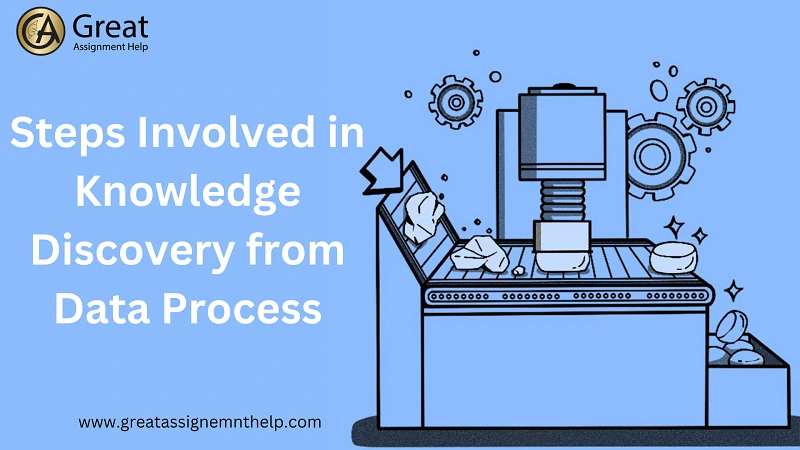Data Mining is the process of extracting knowledge or identifying useful patterns from large and complex sets of data. Mainly, to make this process more accurate, efficient, and cost-effective, several theoreticians and practitioners have been searching for improved data mining techniques. Would you like to know what the common types of data mining techniques are? If yes, then take a look at this blog post. For your better understanding, here, in this blog, we have presented an overview of data mining along with its pros and cons. Also, we have shared in detail the steps for knowledge discovery from the data process and the various data mining techniques. Continue reading and update your knowledge.
What is Data Mining?
Data Mining is the process of searching and analyzing a large set of data in order to discover patterns and extract useful information. In other words, data mining is an important step in the knowledge discovery process, where intelligent methods are applied to extract data patterns. Hence, the term ‘Knowledge Discovery from Data (KDD)’ is popularly used as a synonym for data mining.
Some other terms that carry the same or slightly different meaning to data mining are knowledge mining from data, knowledge extraction, data/pattern analysis, and data dredging. However, in recent times, the term knowledge discovery has been used interchangeably with data mining. The term “Knowledge Discovery in Databases” was coined by Gregory Piatetsky-Shapiro in the year 1989.
In general, data mining can be used in almost all places where a large amount of data is stored and processed. But, overall, data mining is more popular in the business field and press communities.
Advantages of Data Mining
Data Mining provides plenty of benefits across several industries. Some major pros of data mining are listed below.
Particularly, the data mining helps the businesses to
- Make better decisions after analyzing patterns and data relationships.
- Identify the target market and build effective marketing strategies after analyzing customer data.
- Improve marketing by creating targeted advertising campaigns and personalized products or services.
- Identify fraud activities in financial transactions
- Find out customers who are at risk of quitting and build strategies to retain them.
- Gain a competitive advantage by finding out new opportunities and the latest trends.
Disadvantages of Data Mining
The data mining process also involves certain disadvantages as listed below.
- If the data used for analysis is incomplete, inconsistent, or inaccurate, then the result may be unreliable.
- The data mining process involves a large volume of data. Hence, data privacy and security may be affected if the data goes into the wrong hands.
- At times, data mining may raise certain ethical questions related to discrimination, surveillance, and privacy.
- To perform the data mining process, one must require a strong knowledge of computer science, statistics, and technical skills.
- Since data mining involves large data sets, the process may be expensive. Therefore, it might be tough for small businesses to use data mining.
- The data generated by data mining algorithms may be difficult to interpret for businesses and organizations.
- Data mining depends highly on technology. Hence, when hardware or software crashes, data loss or corruption may occur.
Aslo Read: Outstanding Big Data Research Topics
Steps Involved in Knowledge Discovery from Data Process
Knowledge discovery from data (KDD) is a multi-step process that extracts useful knowledge from data. The following are the major steps of the KDD process.
Data Selection
It is the first step in the KDD process. This step mainly focuses on the identification of data sources and the selection of data for analysis.
Data Preprocessing
Generally, data collected from different sources may have errors. Therefore, this step deals with cleaning and preparation of data for analysis.
Data Transformation
For a meaningful analysis, after data cleaning, data needs to be transformed. In this step, data will be converted to a form that is suitable for data mining algorithms.
Data Mining
This step focuses on applying various data mining techniques for identifying patterns and relationships in the data. In particular, here, the selection of appropriate algorithms and models for data will be done.
Pattern Evaluation
After data mining, it is necessary to evaluate data patterns and relationships further to discover the usefulness of the data. This step mainly involves pattern examination to determine whether it will be helpful to make predictions or decisions.
Knowledge Representation
Next, the identified data patterns and relationships should be represented in a form that is understandable to the users. This involves the presentation of results in a way that is suitable for making decisions.
Knowledge Refinement
The knowledge gained from the data mining process should be refined further to enhance its usefulness. This focuses on improving the accuracy and usefulness of the results by using the feedback obtained from the end-users.
Knowledge Dissemination
This is the final step in the KDD process. Here, the knowledge obtained from the end-users will be disseminated. Moreover, this step focuses on the presentation of results in a way that is understandable and meaningful to make the right decision.
Aslo Read: Best Data Engineering Project Ideas for Students
8 Important Types of Data Mining Techniques
In this section, let us have a look at the various types of data mining techniques that are used for predicting desired output.
Association
Association analysis is a technique that finds association rules that show an attribute-value condition that frequently occurs together in a particular data set. Mainly for transaction data analysis, you can widely use association analysis. Association rule mining is one of the important areas of data mining research. In general, associative classification is one of the significant methods of association-based classification and it will contain two steps as specified below.
- To generate associated instructions, you can use a modified version of the standard association rule mining algorithm known as Apriori.
- Next, you can build a ‘classifier’ as per the discovered association rules.
Classification
Classification is the process of discovering a new set of models or functions that distinguishes data classes for using the model to predict the class of objects whose class label is unknown. The decided model is based on an examination of a collection of training data information (data items with known class labels). You can express the resulting model in a variety of ways including classification (if-then) rules, decision trees, and neural networks. The different forms of classifiers used in data mining are
- Decision Tree
- SVM(Support Vector Machine)
- Generalized Linear Models
- Bayesian classification:
- Classification by Backpropagation
- K-NN Classifier
- Rule-Based Classification
- Frequent-Pattern Based Classification
- Rough set theory
- Fuzzy Logic
Prediction
Similar to data classification, data prediction is also a 2-step process. But, for prediction, the phrasing of “Class label attribute” need not be done because the attribute for which values are forecasted is consistently valued (ordered) rather than categorical (unordered). This attribute is simply known as the predicted attribute. Prediction may be defined as the development and use of a model to determine the class of an unlabeled object or the value ranges of an attribute that a given object is likely to have.
Clustering
Clustering examines data objects without consulting a class label that is identified. Generally speaking, the training data lacks class labels since they were never established in the first place. These labels can be created using clustering. The idea of object clustering is to minimize interclass similarity while optimizing intraclass similarity. In other words, groups of things are arranged so that, while the objects within a cluster differ from one another, they share a high degree of resemblance with one another. It is possible to think of each produced Cluster as a class of objects from which rules may be deduced. Moreover, clustering can also help in the process of organizing observations into a hierarchy of classes that collectively classify related occurrences.
Regression
Regression is a statistical modeling technique that uses data from past observations to predict a continuous quantity for future observations. The Continuous Value Classifier is another name for this classifier. Regression models come in two varieties: multiple linear regression models and linear regression models.
Artificial Neural Network
A process model that is backed by biological neural networks is called an Artificial Neural Network (ANN) or a Neural Network (NN). It is made up of a network of artificial neurons that are linked to each other. An input/output unit set with weights assigned to each link is called a neural network. In the knowledge phase, the network learns by changing the weights such that it can accurately anticipate the input samples’ right class label. Mainly, because of the links between units, neural network learning is called connectionist learning. Since neural networks require lengthy training periods, they suit well for practical situations that are feasible.
However, the benefits of neural networks include their great tolerance for noisy input as well as their capacity to categorize patterns on which they have not been trained. Furthermore, various novel techniques for extracting rules from trained neural networks have been devised. These difficulties contribute to neural networks’ effectiveness in data mining categorization.
An artificial neural network refers to an adjective system that modifies the structure-supported data passing through it in a learning phase. The idea of learning by example is the foundation of the ANN. Neural networks may be classified into two traditional types: perceptrons and multilayer perceptrons.
Outlier Detection
The outliers are data objects that do not comply with the standard behavior or model of the data present in a database. Outlier mining refers to the examination of this outlier data. To determine the outlier, you can use statistical tests that presume a distribution or probability model for the data, or by employing distance measurements, which consider objects with a tiny number of “close” neighbors in space to be outliers. Instead of using factual or distance metrics, deviation-based strategies identify outliers/exceptions by examining variations in the primary properties of items in a group.
Aslo Read: Unique Data Science Topics To Consider For Academic Work
Genetic Algorithm
Genetic algorithms are adaptive heuristic search algorithms that are a subset of evolutionary algorithms. Natural selection and genetics are the foundations of genetic algorithms. These are clever exploitations of random search that come along with historical data to lead the search into the solution space area of greater performance. They often help to produce high-quality solutions for optimization and search difficulties.
The genetic algorithm simulates natural selection. This implies that organisms that can adapt to changes in their environment survive, reproduce, and pass on to the next generation. In other words, they imitate “survival of the fittest” among individuals from successive generations in order to solve a problem. Each generation consists of a group of people with each individual representing a point in the search space and a potential solution. A string of character/integer/float/bits represents every person. This string will be similar to the Chromosome.
Wrapping Up
We hope you have now gained a basic understanding of the various types of data mining techniques. If you are working on a data mining project, then you must know about the different data mining methods for desired output prediction. In case, you have any doubts about the data mining concepts or if you need an expert to offer data mining assignment help, contact us immediately. On our platform, we have numerous academic writers with strong knowledge of data mining techniques to assist you with preparing your assignments and projects on time as per your requirements. Note that, the solutions that our data mining experts deliver will be original and accurate.
Don’t hesitate! Simply book your order on our website and get the extraordinary benefits of our budget-friendly data mining assignment help services.



